Our modern work environment is not the same as it was when we started creating large organizations over a century ago. Work has evolved from simple roles that individual contributors completed on a routine basis where we could easily measure and reward the output of every employee. The ‘Future of Work’ looks dramatically different.

The technology needed to manage a more complex ‘Future of Work’ requires a complete redesign of how we define company culture and then deliver People Technology that helps employees feel like they genuinely belong inside of that culture.
What is a Culture of Belonging at Work?
Before we develop any new People Technology, we must first create a universal definition of what an effective culture feels like for every employee.

A workplace, where they understand, encourage, challenge, and support each other's individual strengths as we collaborate towards building a successful company. Together, they create a positive and supportive environment where everyone is valued and able to contribute their unique abilities.
The culture inside of most organizations does not reflect this definition. Most of the People Technology currently used to manage employees is not designed to create this type of relationship and does the complete opposite by creating a culture of competition and isolation between individual employees.
There are several significant changes that must be made to our People Technology if we want to achieve this ‘Culture of Belonging’.
Work is Rapidly Changing
Before describing the changes that must be made to our People Technology, we must clearly understand the evolution of the products we create, the advancement in education of the people who build those products, and the massive shift in how we measure and control the productivity within these teams of employees.
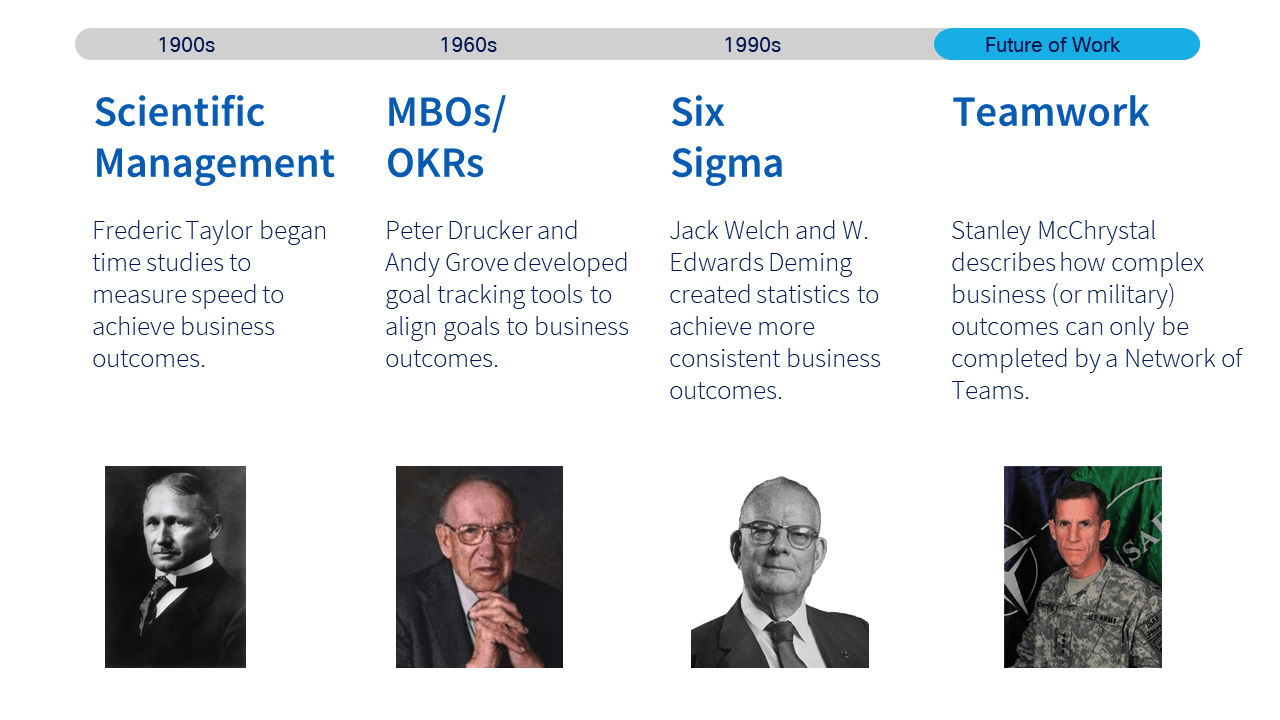
Work has changed significantly over the past century to a point where we can no longer get work done using independent individuals completing a sequence of unique tasks that could be tracked and measured. We have rapidly moved to a dynamic team structure where interdependent individuals must work together in teams to create complex products and solutions for their customers. Many thought leaders call this new structure a ‘Network of Teams’ or ‘Future of Work’.
People Are Changing
Along with dramatic changes to the complexity of work, we have also seen similar changes in the people performing this work.
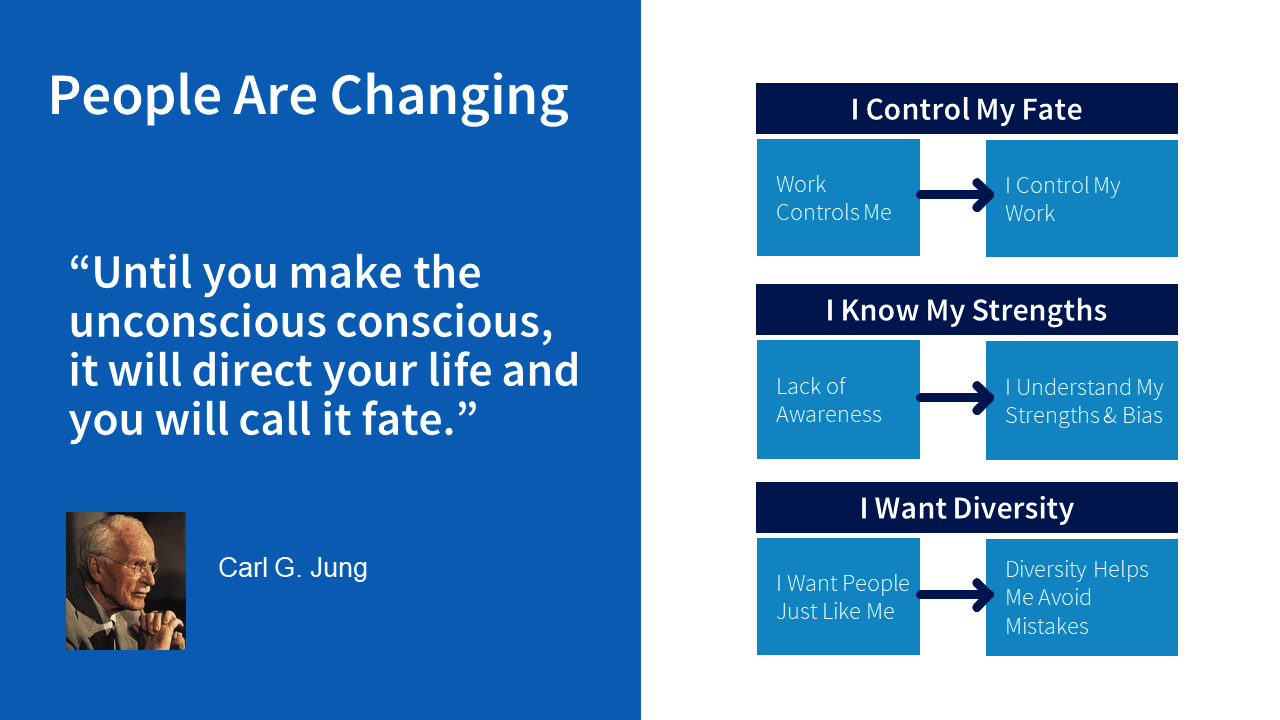
As the education level of our entire workforce has dramatically increased over the past 100 years, we now have an entire workforce that understands that their future can be controlled by the decisions they make on a daily basis. People have a much better understanding of their own strengths and how cognitive diversity can help teams avoid major mistakes. Unfortunately, the majority of our People Technology has failed to catch up to the education level that exists in our modern workforce.
How We Measure Work Culture Is Changing
We are hurting our employees when we ask them to work together in teams while measuring everything about them based on individual performance. We need to stop focusing on historic productivity measurements and start focusing on measuring ‘Belonging’ within the culture of our organization.

Every organization must ask this one simple question: “Are we building our work culture around employee competition or employee connection?”. You can’t have both. If we are building a culture around employee competition, then it is OK to continue putting a major emphasis on efficiency, contribution, and consistency. On the other hand, if we are building a culture around employee connection, then we need to start putting a much bigger emphasis on measuring ‘Belonging’ and how everyone supports each others’ unique individual strengths.
We also need to standardize the way we measure ‘Belonging’ inside of an organization so we can benchmark where we are, identify how to improve, and celebrate progress.
Control is Changing - (DISRUPTING EVERYTHING)
There is one more major disruption happening inside of organizations that is difficult for some leaders to accept as we move to the ‘Future of Work’.

As we move to the ‘Future of Work’, the biggest disruption has occurred to leaders within a ‘command-and-control’ org structure who were use to directing people to do what is best for the company. Today, HR and business leaders must stop focusing on what our employees are doing for the organization and instead focus on influencing what they are doing to support effective teamwork. In other words, leaders no longer control the work. We now have teams controlling the work and it is up to every individual, including leaders, to help influence each other towards a common goal or common culture.
Market Confusion as we Change to the Future of Work
With so many changes in the types of products we create, the advancement in education of the people who build those products, and the massive shift in how we measure and control the productivity within these teams of employees, it is no wonder why most companies are struggling to figure out how to create People Analytics to measure performance as we painfully evolve from ‘Traditional Work’ to the ‘Future of Work’.
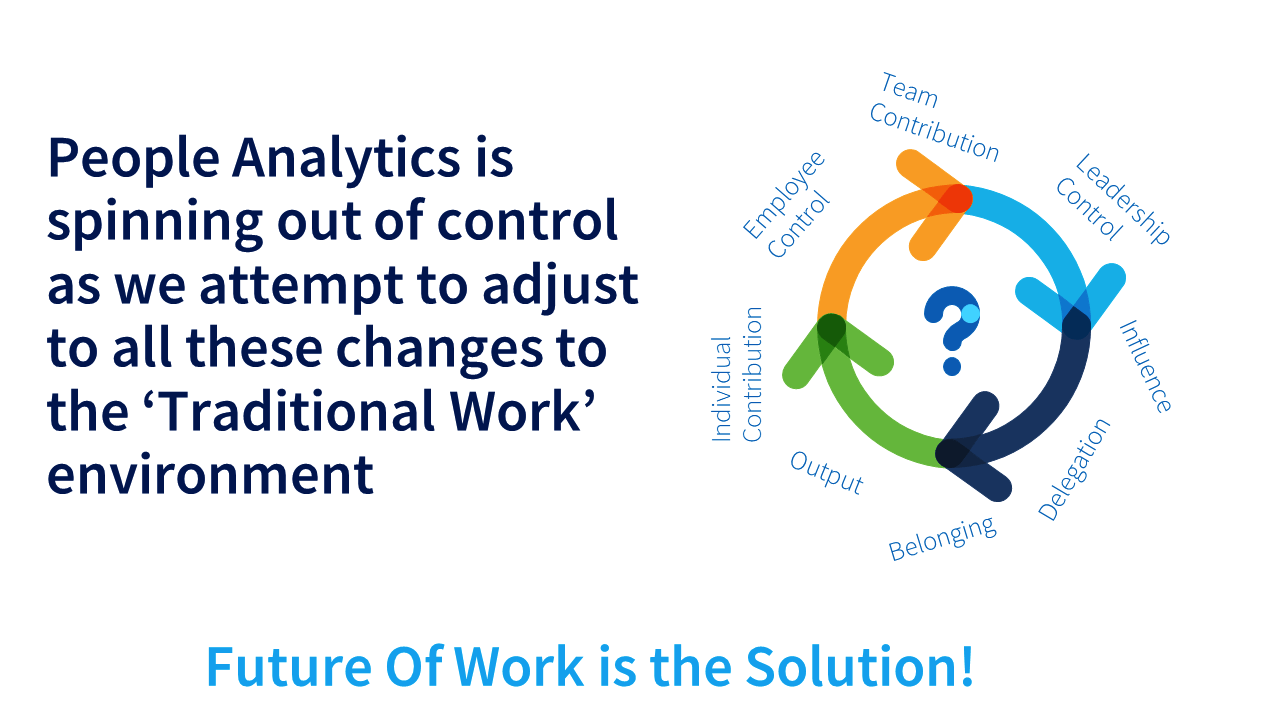
For the past 100 years technology and innovation has disrupted nearly every aspect of how, where, when, and why we work. You would think that how we measure, monitor, and drive employee performance would change as well but many organizations describe their People Analytics programs as spinning out of control as we sporadically adjust to all of these changes. We continue to try and fix this problem by adding additional tools and technology which only end up adding more stress felt by every employee. The average large organization now has 15 or more tools within their People Technology stack.
Everything Must Change in the Future of Work
The ‘Future of Work’ is the solution. But what does that really mean? What changes need to be made to our People Technology stack to make the ‘Future of Work’ achieve this ‘Culture of Belonging’ where everyone supports each others’ unique strengths as they work together to build a successful company?
All of these things must change in unison if we hope to effectively move to this 21st-century organizational structure called the ‘Future of Work’. If organizations are now structured as dynamic teams that require strong relationships between individuals, then our People Technology needs to also focus on building trusting connections between people. Here are some of the key changes that must take place:
- Performance tracking needs to stop focusing on individual contribution and start focusing on team contribution
- Leadership objectives need to stop focusing on delegating responsibility and start focusing on influencing effective teamwork
- Performance metrics need to stop focusing on output/productivity and start focusing on increasing a ‘Culture of Belonging’
- People Technology needs to convert from a closed architecture into a decentralized architecture that provides transparent analytics to all stakeholders
- The data structure for People Technology must become standardized rather than customized for each organization so that individuals can retain and transfer their data throughout their career
- And finally, People Technology needs to create value for all stakeholders including individuals, employees, teams, leaders, and the organization
Future of Work Requires a Connected Structure
Building People Technology designed for the ‘Future of Work’ will enable us to connect data together and add more value to everyone who creates and utilizes this data. But what does connected data look like? Is it really possible to create a universal model that can be used by every organization around the world?
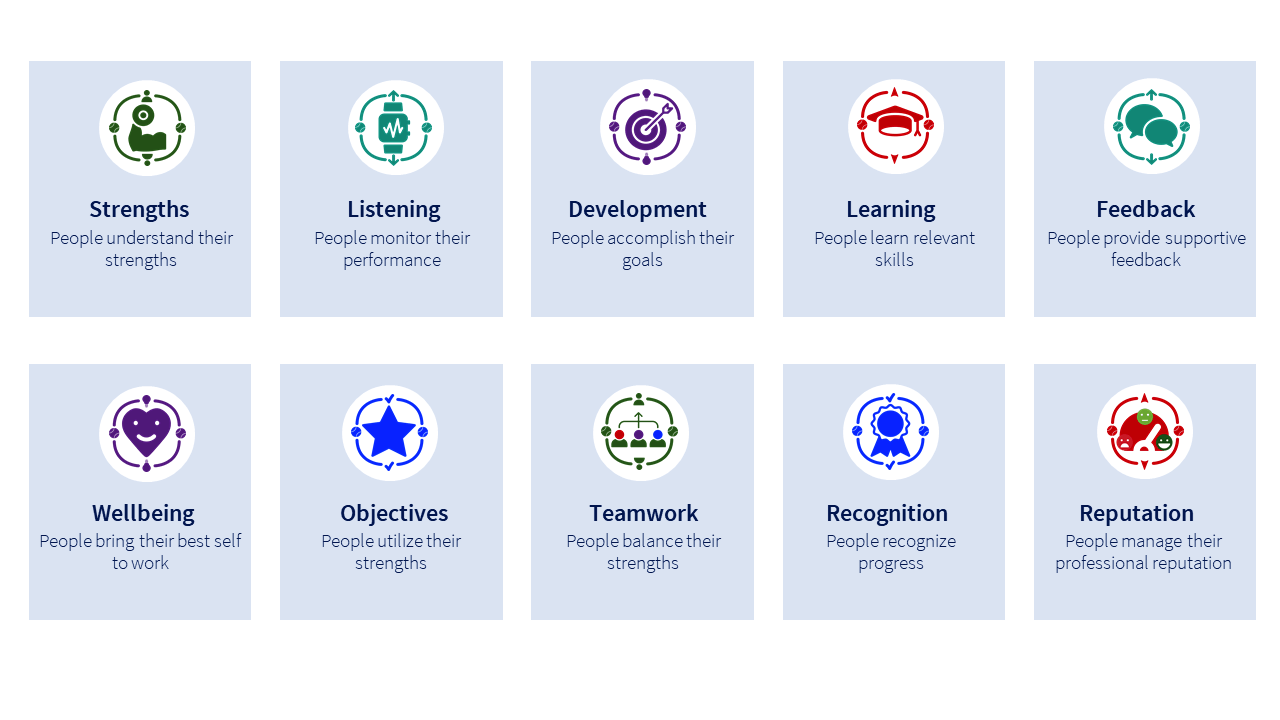
The ‘Future of Work’ will utilize these ten universal components of People Technology and merge them together into connected People Analytics that every individual can access and utilize to help all employees thrive in a supportive environment.
We have historically spread these components across several different disconnected and independent functions or departments within Human Resources. Solution vendors have then been forced to create unique solutions for each HR department and develop complex integrations to pass data back and forth between each proprietary database.
This disconnected structure must come together not through complex integrations, but a fundamental shift in how we design People Technology for the ‘Future of Work’. The behavior model we use to track strengths must connect to the learning model we use to track education which must connect to the feedback model, the wellbeing model, the goal-tracking model, and the recognition model all in one standardized and connected data structure.
Future of Work Reinforces a Culture of Belonging at work
We need People Technology that makes it natural to ask for help and feedback from others. This will impact the wellbeing of your employees in a positive way as they create a network of trusting relationships or 'internal allies' that builds cohesion and trust between team members.
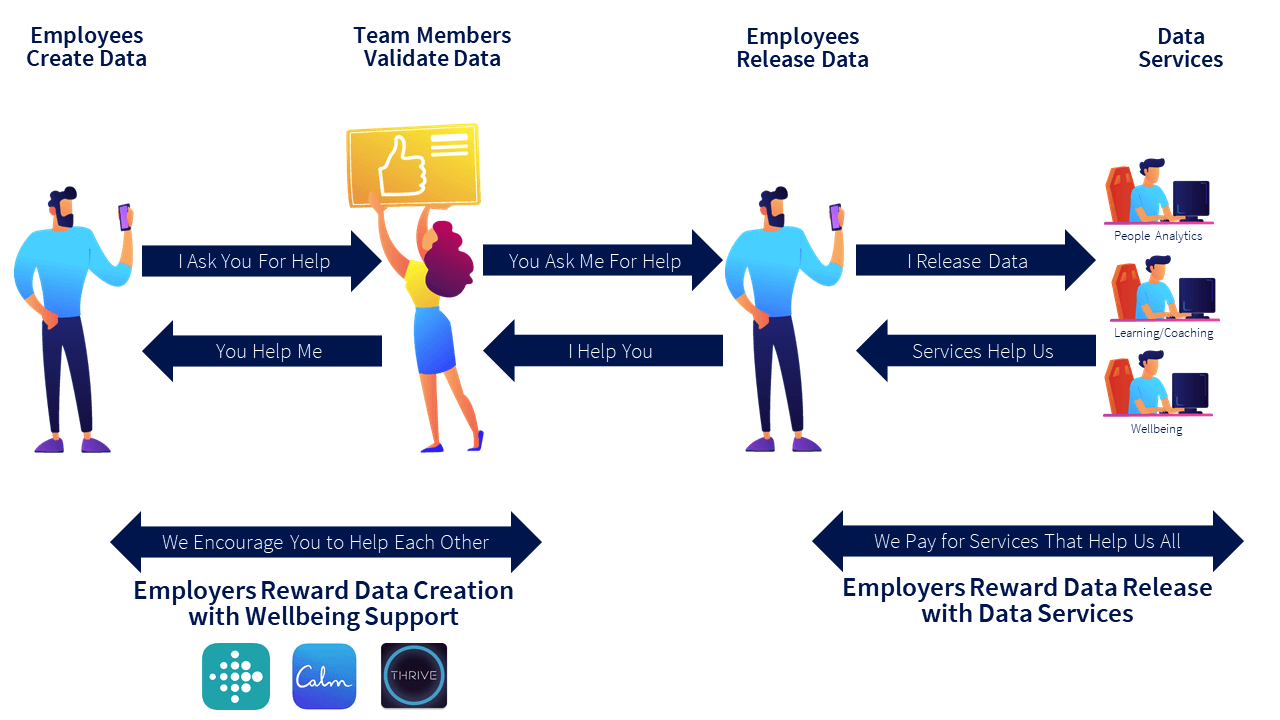
When people feel excluded from decisions or opportunities they feel stress and anxiety. We must buffer employees from feeling excluded by encouraging and rewarding them to set up strategic allies across the organization who support each other by validating strengths, supporting learning, confirming goals, and delivering recognition. By making it acceptable to ask for help from each other, we will eliminate the detrimental effect of exclusion that is too common today. Reinforcing this helpful behavior with rewards focused on employee wellbeing will convert historic competition into supportive teamwork.
Future of Work Requires Decentralized Data
Data privacy has become a concern for every employee. The ‘Future of Work’ requires a fundamental shift in the status quo where employee data is owned by companies to a future where the data is owned by the individual worker and shared with their organization.
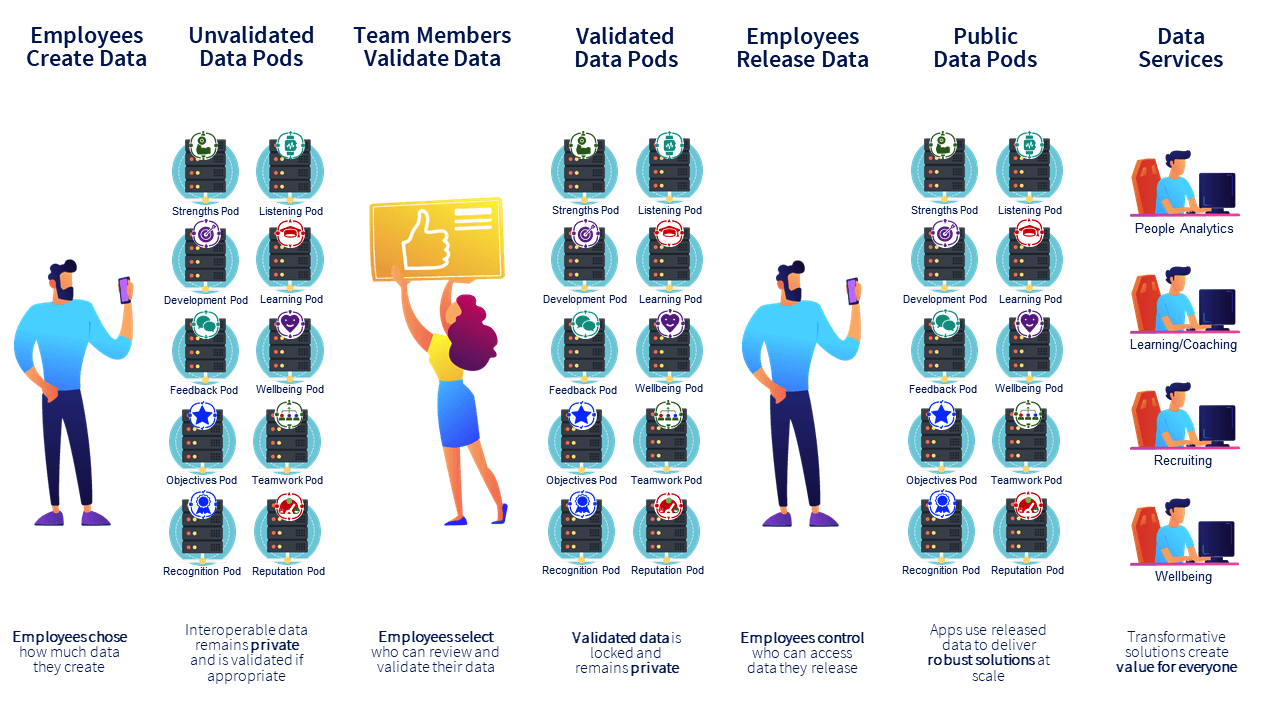
True ‘Belonging’ means that every employee has a feeling of power over their future. How much power do employees currently have over the work they do or the data they create? When we give people control, they feel ownership and ‘Belonging’. Managers must stop using People Technology to control employees’ activities and start allowing employees to using People Technology to control their own development. This pivotal disruption cannot happen without fundamentally changing the control of all employee performance data related to an individual.
Look at what this type of freedom of data has done for personal finance and fitness. Tools like Mint and Fitbit have put financial and health performance data into the hands of individuals with remarkable outcomes. This type of freedom and independent ownership of work performance data can be equally as impactful for individuals and organizations. This data shouldn’t be thrown away the minute an employee leaves an organization.
Future of Work Requires ‘Belonging’ Survey Questions
Employee ‘Belonging’ should be the top strategic goal for every organization that wants to succeed in the ‘Future of Work’. ‘Belonging’ is a feeling we can all understand and it makes the ‘Future of Work’ become real. We need to create a standardized method to measure ‘Belonging’ across all organizations.
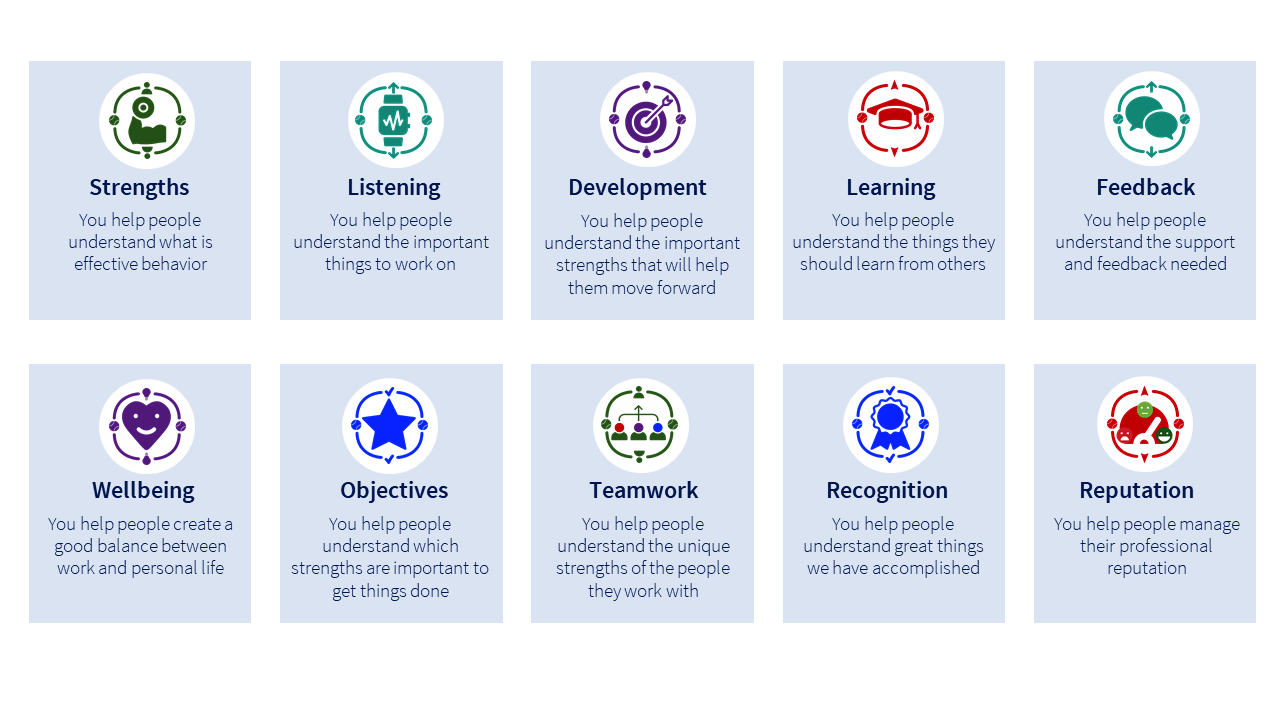
These ten questions are similar, yet very different than the typical ‘Engagement Survey’ most companies use to measure employee sentiment. Most ‘Engagement Surveys’ ask employees to reflect on their personal feelings. The major difference with this set of questions is the focus on measuring how you feel you contribute to the creation of your company culture rather than how you feel as the recipient of your company culture. This difference is extremely important. These questions clearly ask every employee to reflect on how they influence the people they work with and promote the desired actions necessary to create trusting relationships, high-performing teams, and great places to work.
Future of Work Requires Transparent Reporting
Transparency means sharing information freely in an effort to benefit the organization and its people. If we want our employees to create more trusting relationships, then we need to allow access to all data that will help them understand and communicate openly about how we can effectively work together.

When individuals don't feel like they ‘Belong’ inside of an organization, they often think that they are alone and unsupported by others. Without access to valid data, they have no perspective regarding the extent of the problem and whether they are experiencing feelings that multiple people would like to fix. Knowledge is power and transparently distributing this knowledge to all employees creates the trusting relationships that empowers people and businesses to build great places to work together.
Future of Work Creates a Culture Where Everyone Belongs
Creating People Technology redesigned for the ‘Future of Work’ will deliver a company culture that ensures each employee feels like they genuinely belong inside of an organization that understands and supports their unique strengths. This creates value for all stakeholders.

The ‘Future of Work’ creates unique value for all stakeholders across an organization by:
- Giving everyone access to data and perspective
- Encouraging stronger relationships where everyone feels comfortable asking for help, as well as mentoring and coaching each other
- Empowering everyone to be part of the solution in creating a more inclusive and enjoyable culture
- Transparently reinforcing the contribution each individual brings to an organization
- Creating value by converting perceived connections into real connections across an organization
Who Can Create This Culture of Belonging at work?
I can't create this ‘Culture of Belonging’ by myself. You can't create this ‘Culture of Belonging’ by yourself. But working together we can create this ‘Culture of Belonging’ as it is the ‘Future of Work’.
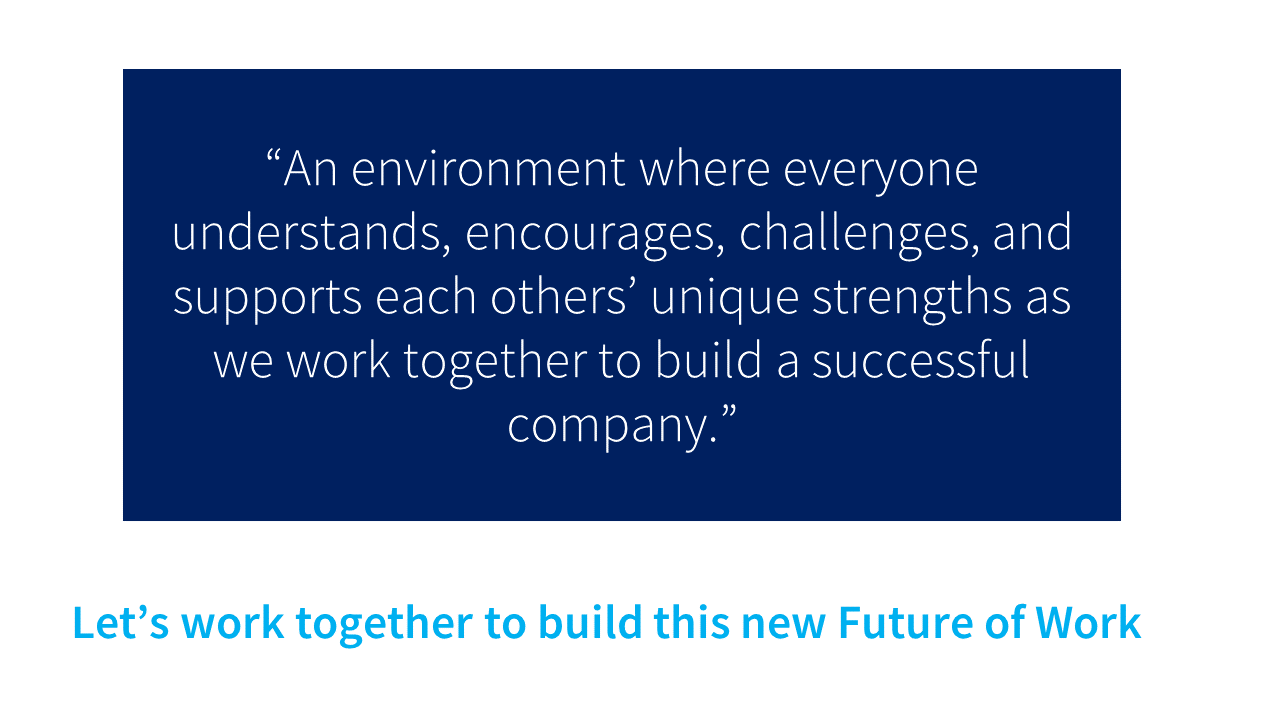
Building this ‘Culture of Belonging’ creates the set of unspoken rules that people follow when interacting with one another. We all must be intentional in how we identify these desired behaviors that we would like to see in each other. We then need to work together to document them, work together to model them, and work together to enforce them. Together we can build this new ‘Future of Work’.
Belonging is the 'Future of Work'
When employees feel like they 'Belong' inside of an organization, the impact translates into major benefits for the organization. A strong ‘Culture of Belonging’ has been linked to a 56% increase in job performance and a 50% drop in employee turnover.

Diversity is being invited to join the organization. Inclusion is being asked to contribute to the organization. Belonging is feeling like you are part of the organization!
Building a company culture where everyone feels ‘Belonging’ should be the top strategic goal for every organization in order to succeed in the ‘Future of Work’.



































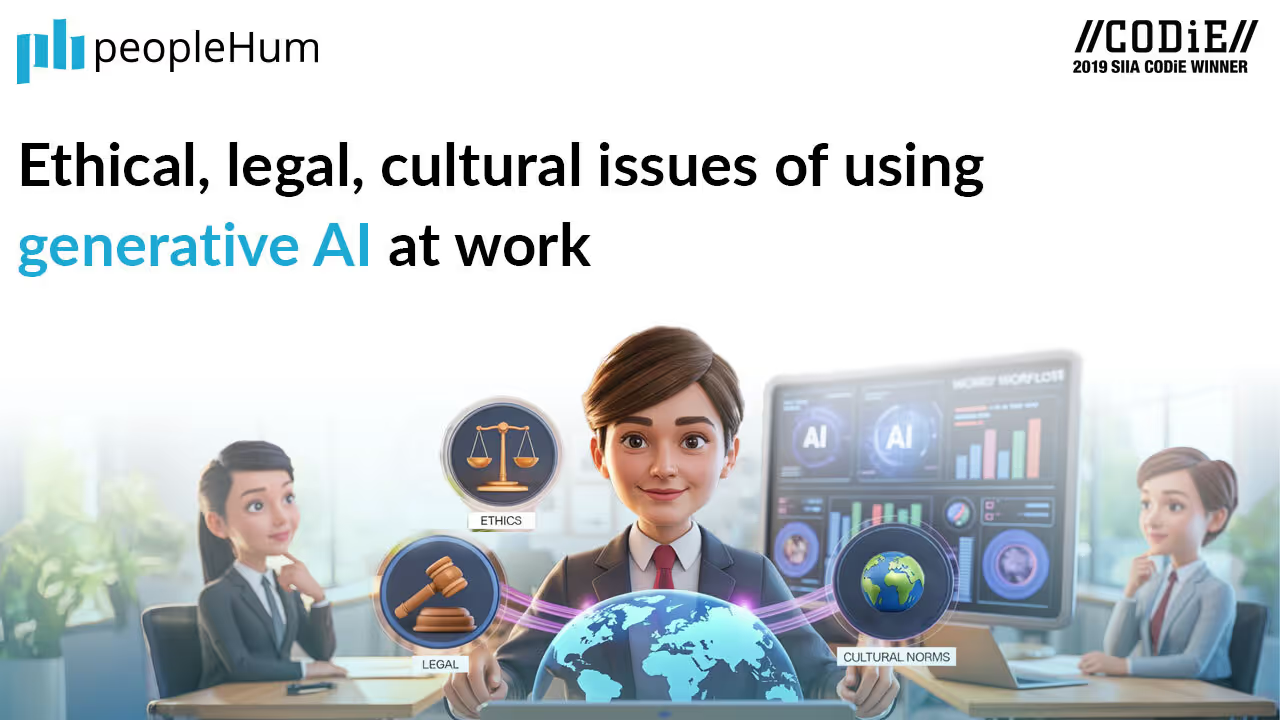
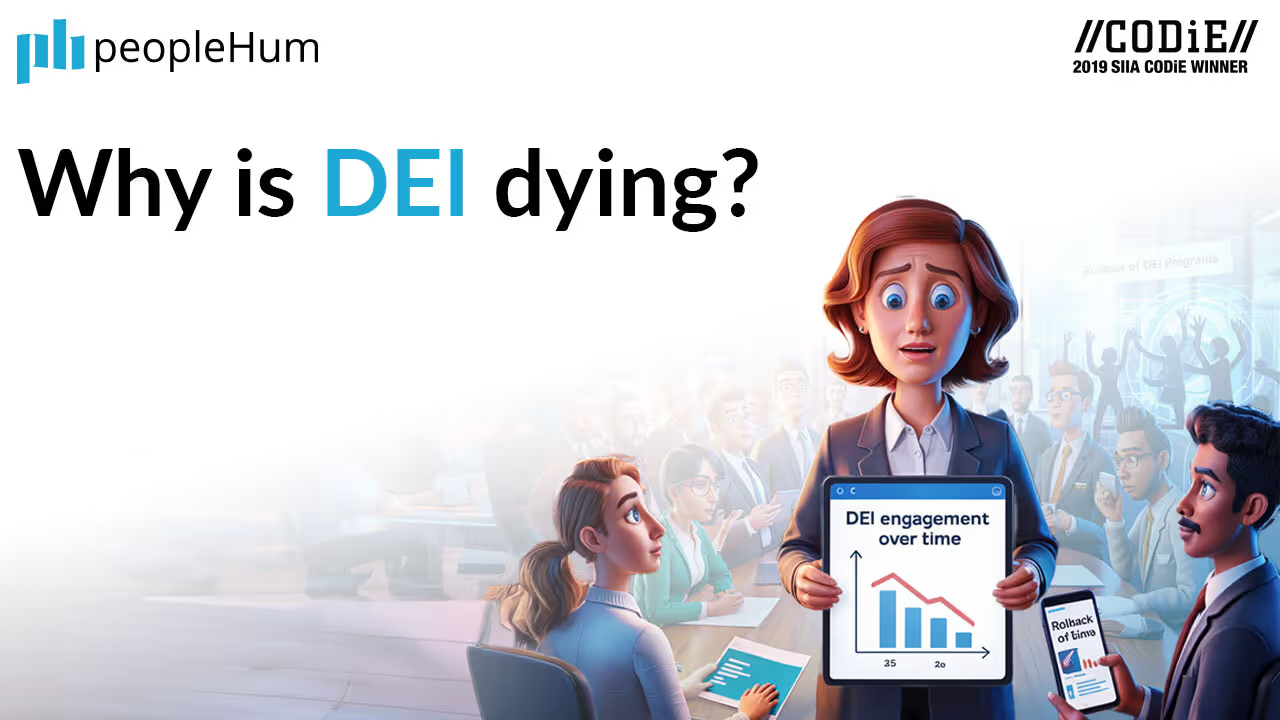
.avif)












